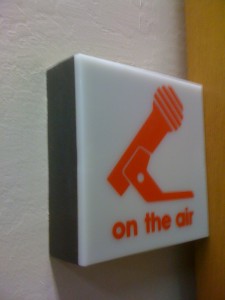Time and time again we are reminded of the vital importance of terrestrial radio following a natural disaster. Just this week, six commercial radio stations in Joplin, Missouri have stepped up following the horrific tornado there.
As was the case after the recent tornado in Tuscaloosa, Alabama and after the hurricane in Haiti; radio has become one of the primary methods of communicating news both before and after the storm. Zimmer Radio, Inc., which owns six commercial radio stations in Joplin, began non-stop coverage of the impending tornado beginning an hour and a half before it hit town on Sunday. As residents lost electricity and Internet access, listening to terrestrial radio became the main way to keep in touch with news about the storm. According to a CNN article:
“KZRG, part of Zimmer Operations’ six radio stations — two that are news and four, music — began its wall-to-wall coverage an hour and a half before the tornado twisted through town Sunday. It hasn’t stopped. For the first 24 hours, there was no electricity. Both cell phones and land lines were out, as was Internet service. All that people in Joplin had were battery-powered transistors.
The tornado missed the station building by a few blocks. So Zimmer Programming Manager Chad Elliot’s staff cranked up the generators and turned off the music. They even canceled the commercials. All they did was provide vital information to people who had lost everything.
Elliot said it was the first time the stations had stopped all else to provide 24/7 information, though he had learned the power of radio two years ago during a jumbo ice storm. ‘We’ve had this situation before, when radio becomes the only way of communication,’ he said. Immediately after Sunday’s killer tornado, Elliot said emergency crews drove to the station to provide information for broadcast. The station began telling people where to go for medical help. Or what number to dial for information about the missing. Or where they could buy gas or where there was still a Walmart standing.”
In addition to sending information out to listeners, the stations in Joplin also served as clearinghouses for callers offering aid or requesting assistance. According to a piece in the Los Angeles Times:
“The stations, based in a one-story building in Joplin, have transformed their staffs into impromptu public health experts and unofficial public information officers, consolidating multiple broadcasts into a single feed of nonstop disaster coverage under the call letters KZRG.
Classic-rock jocks and news talk-show hosts have become on-air first responders.
‘All of a sudden, it turned into people looking for loved ones,’ said [radio host Rob] Meyer, assistant operations manager. ‘ And we just let it grow.’
On late Tuesday night and early Wednesday, questions on the show focused on logistics. Where do I get a permit to enter damaged areas? How do I make a FEMA claim? Callers also passed along the latest survivor tips or staked righteous attempts at fighting misinformation, including one woman who called to say that she and her family were not dead — as had apparently been rumored on Facebook.
Spontaneous charity was rampant. A McDonald’s employee called host Randy Brooks, 40, to take an on-air order: three Quarter Pounders for the hosts and a Happy Meal for Brooks’ daughter. Another caller offered to bring clothes.”
Again, it’s important to realize the areas in which terrestrial radio excels and the key role that it can and should play in its local community. Every time there’s an earthquake, tornado, hurricane, or similar disaster and local radio heroically responds; we should all stop and pause and think about who will help save us in our own home towns. It’s yet another reason why we should vehemently protest when local stations are targets for takeover by out-of-town conglomerates, as I’m not sure that a voice-tracked DJ or a satellite-fed signal from across the country will be able to help when a tragedy hits in my back yard.



